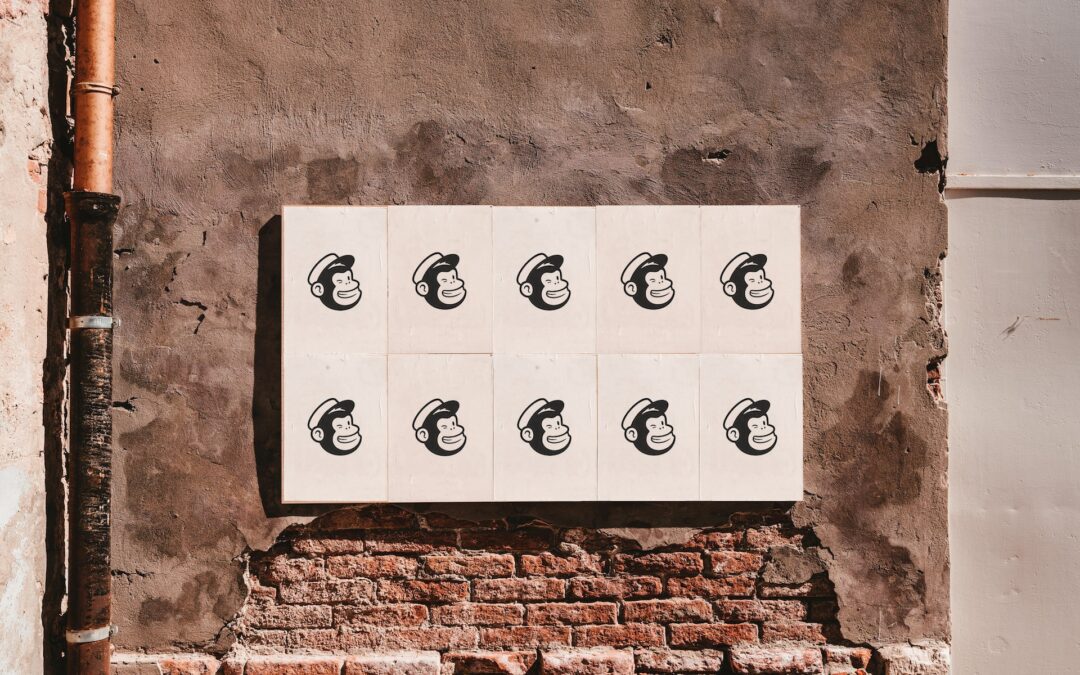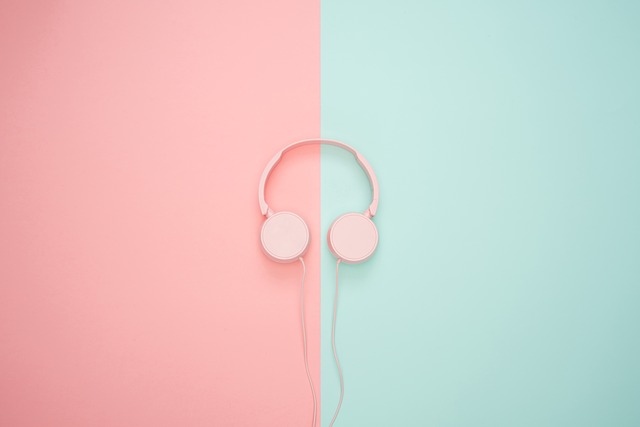
Navigating the World of SMM Panels: A Comprehensive Guide
The Power of Social Media Marketing
In an era where digital platforms reign supreme, businesses have quickly adapted to the realities of online marketing. At the forefront of this revolution is Social Media Marketing (SMM), a powerful tool for brands aiming to increase their visibility, connect with clientele and boost sales. An invaluable resource for effective SMM strategies are SMM panels.
What Are SMM Panels?
SMM panels are marketing service platforms where you can buy different types of social media services such as likes, follows, views, and more. They serve as a one-stop-shop for businesses looking to enhance their social media engagement. They’re the secret weapon many companies use to stay ahead of their competitors by appearing more popular and thereby gaining more real followers.
The Benefit of SMM Panels
SMM panels proffer numerous benefits, with the primary one being the growth and enhancement of a company’s social media presence. They provide quick and efficient results, allowing businesses to gain followers, likes, and comments in a relatively short period. This sudden increase in social media engagement can significantly boost a brand’s visibility and credibility, drawing in more potential customers.
Choosing the Right SMM Panel
Not all SMM panels are created equal. When selecting the ideal SMM panel, consider factors such as reliability, service options, pricing, and customer service. A good SMM panel should offer a wide range of social media services across various platforms, provide reliable services at competitive prices, and boast excellent customer support. This monthly engagement is great for example.
The Risks Involved
While the benefits of SMM panels are undeniable, it’s crucial to be aware of the potential risks. Some SMM panels may provide low-quality services or use unethical methods to boost social media engagement. This can lead to social media accounts getting suspended or even banned. Therefore, it’s critical to choose a reputable SMM panel that guarantees quality services and uses ethical methods.
Final Thoughts
In the fast-paced world of digital marketing, staying ahead of the competition is paramount. Through the strategic use of SMM Panels, businesses can enhance their social media presence, attract more customers, and ultimately increase their bottom line. However, careful consideration should be given when choosing an SMM panel, ensuring quality and ethical practices are upheld. In the world of SMM, a well-informed choice can make all the difference.

Captivating Audiences: The Power of Digital Display Screens for Advertising
Embracing the Digital Age
In today’s fast-paced world, traditional advertising methods are gradually being overshadowed by digital marketing techniques. One of the most prominent and effective tools in the modern advertiser’s arsenal is the digital display screen. These dynamic screens are becoming increasingly popular, with businesses of all sizes using them to engage and captivate their target audiences. This article delves into the advantages of a digital display screen for advertising and how they can elevate your advertising game.
The Visual Appeal Factor
First impressions count, and digital display screens are designed to make a strong impact. These screens offer vibrant, high-resolution visuals that can capture the attention of passers-by in an instant. In a world where attention spans are short, having eye-catching visuals is essential for businesses to stand out from the competition. Some advantages of digital screens include:
– Versatility: Screens can display static images, animations, or full-motion video, providing endless possibilities for creative and engaging content.
– Customization: Tailor your content to suit the needs of your target audience, with the option to update and change your message as often as needed.
– Timeliness: Display time-sensitive promotions or events, ensuring your message is always relevant and up-to-date.
Location, Location, Location
Digital display screens can be installed in a variety of locations, from shopping centers and airports to outdoor billboards and public transportation hubs. This flexibility allows businesses to strategically place their advertisements in high-traffic areas, ensuring maximum exposure to potential customers. When considering locations for your digital display, keep in mind:
– Demographics: Choose a location that caters to your target audience, increasing the likelihood of reaching the right people.
– Visibility: Select a prime spot that allows for maximum visibility, ensuring your advertisement doesn’t get lost in the clutter.
Interactivity and Engagement
One of the most significant advantages of digital display screens is their ability to offer interactive experiences. Through the use of touchscreens or QR codes, businesses can create engaging and immersive advertisements that encourage audience participation. Interactive displays can:
– Generate leads: Collect customer information through sign-ups or forms, helping to build your database for future marketing efforts.
– Increase sales: Encourage impulse purchases by showcasing limited-time offers or promotions.
– Boost brand loyalty: Create memorable experiences that resonate with your audience, fostering long-term relationships and repeat business.
The Bottom Line
Digital display screens offer an unmatched level of flexibility, customization, and interactivity, making them an invaluable advertising tool for businesses of all sizes. By harnessing the power of these screens, you can create engaging, memorable advertisements that captivate your audience and drive results. Don’t get left behind in the digital age – embrace digital display screens and unlock your business’s full advertising potential.

Managing Menopause
Managing menopause symptoms can be a challenging and daunting task. With the right treatment plan, however, women can alleviate many of the unpleasant symptoms of menopause and enjoy a more comfortable transition. In this article, we will explore 5 tips for managing menopause symptoms in the 21st century.
I. Hormone Replacement Therapy (HRT)
Hormone replacement therapy (HRT) is a common treatment option for menopause symptoms. HRT involves taking hormones, such as estrogen and progesterone, to replace the hormones naturally produced by the body. HRT can help reduce hot flashes, improve sleep (see Schlafrechner), and may help with other menopause symptoms. However, HRT is not without risks, and it is important to discuss the potential benefits and risks with your doctor before starting HRT. Factors to consider when deciding whether to use HRT include age, medical history, and lifestyle.
II. Non-Hormonal Medications
In addition to HRT, there are other medications used to treat menopause symptoms. Examples of non-hormonal medications include selective serotonin reuptake inhibitors (SSRIs) and serotonin-norepinephrine reuptake inhibitors (SNRIs). These drugs may help reduce hot flashes, improve sleep, and reduce mood-related symptoms. As with HRT, it is important to discuss the potential benefits and risks with your doctor before starting non-hormonal medications.
III. Natural Remedies
There are also a variety of natural remedies used for menopause symptoms. Examples of natural remedies include herbal remedies, best perimenopause supplements uk, and acupuncture. These remedies may help to reduce hot flashes, improve sleep, and reduce mood-related symptoms. It is important to speak with your doctor before starting any new natural remedy, as some may interact with other medications.
IV. Lifestyle Changes
Making lifestyle changes is also an important part of managing menopause symptoms. Eating a healthy diet, exercising regularly, and managing stress can all help to alleviate menopause symptoms. It can be helpful to incorporate these lifestyle changes into your daily routine.
V. Self-Care and Support
Self-care and support are also important during menopause. Taking time to rest and relax, seeking support from friends and family, and finding resources to learn more about menopause can all be beneficial. Additionally, therapy can be a helpful tool for managing menopause symptoms and overall well-being.
Managing menopause symptoms can be a challenging and overwhelming experience. However, with the right treatment plan, women can enjoy a more comfortable transition. By understanding the available treatment options, making lifestyle changes, and seeking support, women can alleviate many of the unpleasant symptoms of menopause.

Can you view private Instagram? Yes, you can.
Watchinsta.com is one of the most reliable private Instagram viewer sites, which allows users to gain access to private Instagram accounts while keeping their identity hidden.
With a user base of around 1 billion individuals from all over the world, Instagram is one of the most popular social media platforms. Ranked only after Facebook and YouTube, it is rapidly becoming the platform of choice for the younger generation in particular.
It is a medium of self-expression for most individuals, while many use it to enhance their professional stature. The interesting thing about Instagram is that it has dynamic features and is home to diverse forms of content, so individuals belonging to various age groups and demographics like to share their pictures and videos.
How to view a private account on Instagram?
Another very important feature of Instagram is that individuals can choose to keep their account status private. So, while people can share any kind of content they wish, they can choose to limit the number of viewers to whom they give access to their account’s content.
So what do you do if there is an account you are particularly interested in, but that account is private, and you are not one of the followers? Besides making a fake account or sending a follow request, there is the option of a Instagram private account viewer.
You may come across multiple tools online that tempt you with offers to provide access to private account content. However, while there are some authentic and reliable tools, multiple sites are just running a scam and a hidden agenda. Be wary of the fake ones and settle for an authentic site with good reviews.
So, if you are looking for a private Instagram viewer, you don’t need to look any further. Watchinsta.com can do the job very well.
How to use Watchinsta.com
You do not need to make a fake account to try to get into a private account. You can simply use Watchinsta.com for the purpose.
It is a convenient tool designed to provide access to the private account of just about anyone. The interface is quite user-friendly and can be used by even novices who have limited technical know-how and use such apps.
When you enter the Watchinsta site, you need to enter the profile username or URL, and it will direct you to the private account, where you will be able to see all the pictures and videos that were previously hidden from the public view. You can even read the messages in the box. It also enables you to download private files.
When you use Watchinsta.com, your identity remains hidden, and you do not need to log into your account either. You also do not need to download anything on your system either. You can be in and out without anyone having the slightest idea.
The site is quite efficient, as it continues to check for new updates and assimilate them into the software, meanwhile running regular tests for improvement.

How to view a private Instagram profile
Facebook and Instagram are the world’s top social networks. They provide a convenient and easy way for people to keep in touch and share their daily lives. Although Facebook is still number one, Instagram has been catching up fast because of its huge popularity among younger generations. But, as you know, it’s hard to get access to see private accounts on Facebook or Instagram, so here I will show you an alternative method of doing this. It is called watchinsta.com.
It is a unique website that enables you to view private Instagram accounts by just entering their username. As many of us do not have Facebook or Instagram accounts, this is one of the best ways to check on your friends’ personal lives.
Watchinsta.com is a private instagram viewer that enables you to get around all privacy settings and restrictions on Instagram. It has been around for a few years now, and it works amazingly well. It’s one of the best websites out there when you need to get access to see private accounts. The only downside is that some videos cannot be downloaded because they are encoded so that WatchInsta cannot read the data. This is a drawback of most websites that allow you to view private Instagram accounts, and it’s no big deal since most profiles won’t contain such videos anyway.
Steps To View Private Instagram Profile :
- Go to http://www.watchinsta.com
- Paste the username of the person in the textbox which says “Username.”
- Hit enter, and you will have access to see this account’s photos and videos!
- To get rid of watermarks, unlock premium features by registering an account.
- Enjoy! That’s it – simple as that!
What more do you need? Now you can log onto watchinsta.com and check whether your friend has been telling the truth as you already have free access to their private Instagram account. The website is really easy to use, and we hope it helped you out!
Watchinsta.com not only helps you to view posts but also enables you to retrieve messages and files. In addition, you can hack into somebody’s Instagram account and do whatever you want. The developers update the tool regularly, and it is safe to use as you won’t be detected.
On a concluding note, this is an amazing website that lets you get around all privacy settings on Instagram. So you can look into any account without being caught. This tool has been around for a few years, and it works amazingly well. It’s one of the best websites out there when you need to get access to see private accounts!
Watchinsta.com enables you to get access to your friends’ private Instagram accounts. Yes, it might feel like spying on them, but it’s not a big deal since they have nothing to hide in the first place! Since Instagram is all about sharing moments with others, you can use watchinsta.com and do so! You can also look up random people’s profiles using the search bar on the website! It’s a quick tool that you can use to check if your friends are lying or not.

Why would you need an Instagram private profile viewer?
It is true that almost everyone today is aware of the social networking service known as Instagram. The platform that’s owned by Facebook Inc. let’s you share your photos and videos online. It’s an application that was first developed for the iOS devices but newer versions have been upgraded to accommodate Android, Windows 10, and windows 10 mobile versions. Although this is a standalone application, it can still be used alongside other third party applications. Especially the private Instagram viewer.
Can Private Instagram Viewer View Instar Stalkers and Private Profile?
Instagram platform helps you to share your photos, stories, and videos. But you can still hide these if you don’t want to share them with the public. You have some control on the people who can view your contents. You can achieve this control by switching to the private account. Only you or the people you approve can access your private videos, photos, or stories. But with a private Instagram web account viewer, one can view all these content without having to follow all these steps.
Also, with this setting, you can decide if your content will show up in the search results. So, regardless of your account being public, you can make your contents not to show up in the search results.
Why Would You Need an Instagram Private Profile Viewer?
It can be frustrating when in one way or the other you want to view somebody’s photo or video, but the privacy settings can’t allow you to do so. But there are valid methods you can use to do this—through private profile viewer.
There are myriad reasons why you would like to view private Instagram profiles of other users with or without their consent.
For instance, you might come across a video or image that in one way or the other interests you, but when you click on its link, you are directed to the Instagram, Flickr account, or Facebook. So, if you want to see other interesting stories, images or videos the same person has shared, you probably won’t be able until you follow them.
This is where Instagram private profile viewer applications come in handy. With these applications, even without the user’s permission, you can view their accounts profile photo, their videos, their stories, and everything you need to see.
Checking out the profiles of potential customers can help brand and image creators come up with customized marketing strategies as well as content to their consumers.
Equally important, if you are crushing on someone, Instagram private profile viewers can help you to view their Insta profiles, which can offer lots of insightful knowledge.

You Can Bestow the Title of Lordship and Ladyship
Giving a Unique and Memorable Gift
Are you at your wits’ end in search of a meaningful gift for someone important in your life? Consider this: a personalized certificate authenticating the title of Lord or Lady of England, printed on museum-grade paper, stamped with an embossed golden seal, embedded with a hologram, and recorded permanently in a database registry.
Imagine the attention this certificate will command when framed and displayed in a prominent location in the home or office.
Anyone who sees it cannot help but feel impressed.
You can easily acquire it on the lordship-titles website.
 It’s Legal and Authentic
It’s Legal and Authentic
According to English law, the certificate is 100% legal because no intent to change one’s identity has been demonstrated. In addition, a person maintains the right to choose what he or she prefers to be called. One isn’t required to have English citizenship to display such an attestation. Although possession of such a document guarantees no special treatment, many holders have unexpectedly received gifts and service upgrades from businesspersons eager to cultivate their favor.
A Gift that surpises
Your gift can serve as a visual representation of how highly you esteem the recipient. It can acknowledge many people’s secret wish for high social status. It can even spark interest in digging into one’s ancestry to discover if there really is royalty in the background. Your gift will bring laughter for its creativity, and in doing so, create a new memory to be enjoyed over and over. This distinctive certificate can provide an elegant recognition of a person’s worth based on their efforts of years of hard work or volunteerism. Bestowing the title of Lord or Lady is an appropriate gift shareable with family members, friends, coworkers, or supervisors. With anyone who wants to feel good!
Although a certificate printed at home based on a free online template is special because you made it, your investment in a well-made quality product adds extra significance.
There are occasions unrelated to celebrations when something from the heart makes a difference in easing someone’s pain. For people feeling grief from the loss of a loved one, sometimes your understanding of their pain matters more than anything else. Memorializing the special person’s name in print with a distinguished title is a way to spotlight their existence and value.
And You, Your Lordship? Your Ladyship?
What about yourself? We all have days when we need a boost. We could buy ourselves dinner as a reward, but a certificate showing our well-deserved title of lordship or ladyship will be a reward that keeps on rewarding, a reminder that we are worthy of the best.
What is Cyberpunk 2077 and why is it getting so much praise?
If you play video games, you may have been hearing about an upcoming new game called Cyberpunk 2077.
If you do not read video game news media, however, you may not be aware of what the game actually is and why it is getting so much positive press.
What is Cyberpunk 2077? — Developed by Polish video game company CD Projekt Red, Cyberpunk 2077 is a role-playing game with a cyberpunk theme.
The game takes place in an open world in a dystopian future. It is highly customizable to each player’s gameplaying style, has an in-depth story and hundreds of quests to complete. The game also features some of the best artwork and animation in any RPG ever released.
Why is Cyberpunk 2077 getting so much praise? — There are still almost five months before the game is released, but early previews of the game show it to be one of the most complex, most in-depth and most beautifully designed games in many years.
This was to be expected, given that Cyberpunk 2077 is being designed by the same people that created the award-winning The Witcher series of games.
What was not expected, however, was just how customizable the game is, how complicated the storyline and how many quests there are to complete. Quests that are not like those in a typical RPG, but are also more customizable to the player.
Weaponry too is being spoken about as some of the best seen in an RPG.
The game will also be released as a DRM-free game, as all of CD Projekt Red’s games have been.
This is so unusual for a game of this size and caliber, gamers are excited to have the opportunity to buy and own such a game without any digital rights management attached to it.
Finally, both critics and gamers are excited about being able to play an RPG that can be completed without having to kill anyone in-game. This is not possible in most other RPGs, but CD Projekt Red added this to Cyberpunk 2077 at the request of fans.
Is Cyberpunk 2077 likely to be the best game of 2020? — While other games could be released in the next year that are not currently known about, Cyberpunk 2077 is the one that is ahead of the pack of new releases at the moment.
Unless other game developers are able to drastically improve what they are offering in their new games next year, however, there does not yet seem to be another game that is of the high caliber of Cyberpunk 2077.
That is one of many reasons why critics are already saying it is likely to be the game of 2020 as, even before release, Cyberpunk 2077 cheap is already a game that will be hard to beat.

Sony WH-1000xM3 and Bose QC35 II – Who wins?
Deciding on which pair of noise-canceling headphones to purchase can be a more difficult task than it sounds – especially considering the fact that Sony WH-1000xM3 and Bose QC35 II are at the top of the mountain, both brands offering high-quality products for the price. Both products come with virtually the same price tag, which means that at the end of the day it all comes down to their features and to preference.
Audio Quality
The quality of the sound should be the top priority when it comes to deciding on which pair of headphones to buy. In this category, Sony’s product excels, providing a hard-hitting sound as a result of the company’s signature bass profile and the QN1 processor which makes the sound cleaner by reducing distortion. Music with plenty of bass will perform well on the WH-1000xM3, due to the fact that the headphones have a lot of low-end.
On the other hand, the QC35 II headphones provide a crisp sound. The highs and mids of the sound create a balance, but the bass is also a dominating feature. While the low-end doesn’t have as much depth when compared to the WH-100xM3, it doesn’t sound muddled and it manages to create an impact.
There are a few youtube videos we would recommend watching to get an idea of what each set of headphone entails, e.g.
Noise-Canceling Capabilities
Both headphones stand out when it comes to their active noise cancelation performance, however, the QC35 II is one step ahead of the WH-1000xM3. The Bose product comes with two modes when it comes to noise-canceling (low and high). The Low mode is designed to cancel noise in a quiet environment, while the High feature takes things to the highest level, blocking out any noise. Moreover, the noise cancelation feature doesn’t compromise the audio.
The WH-1000xM3 however is also able to do provide solid active noise cancelation. While its capabilities in this category are outmatched by the QC35 II, the Sony headphones are able to shut out loud train engines or a noisy crowd, but doesn’t perform as well in windy environments.
Aesthetics
Of course, when it comes to design, determining the winner comes down to the taste of the individual buying them. However, there are certain features that the headphones have that might help one decide which one stands out for them. For example, Bose might take the cake here for those who prefer having more options to choose from in terms of color. The QC35 II comes in Black, Silver, Triple Midnight, and Midnight Blue, and for an extra fee they can be customized. The Sony headphones on the other hand come only in Black and Silver.
Other features that might be of interest are weight and battery life. The QC35 II is slightly lighter, weighing 8.2 ounces, whereas the Sony headphones are 9 ounces. As far as battery life goes, the WH-1000xM3 wins, staying on for 30 hours with noise-canceling on, whereas the Bose has a battery life of only 20. On the other hand, with the noise-canceling feature off, the QC35 II has a longer battery life than Sony, at a total of 40 hours, compared to Sony’s 38.

The Rise of Indie Films in the Movie Industry
For years there had been a custom set in the movie industry to expect big budgeted movies like “The Terminator 2” to be the ultimate blockbuster hits of the year. And these were the kind of movies, the audience was being directed towards. However, as the years progressed, so came the rise of the Indie movie culture and more and more independent directors started coming into the mix.
It can safely be assumed that the rise of Independent films started with the release of “Sex, Lies and Videotape” in 1989 which was directed by Steven Soderbergh. The movie covered an unconventional story with a not so famous casting but the movie itself was an instant hit as it served as a stepping stone for many independent filmmakers.

Since then the independent film culture has continued to rise and over the year many indie movie studios have become subsidiaries of well reputed and known powerhouses of the industry. The rise of the Indie films culture promoted the American theater which specialized in this kind of the films which had low budgets.
As Indie films started getting popular, more and more investments started coming in. And with more investment came, more indie films started coming out which eventually led to the introduction of film festivals which served as a premium showcase for such movies. The Sundance Film Festival is just an example of how popular indie movies has gotten over the years.
However, as time has passed, not only do these filmmakers have focused on low budgets but also getting creatively independent. The best example of the progress Indie movies have made can be summed up by the fact that “American Sniper” last year was among the only big budgeted movies to have a shot at winning the best picture award whereas the competition had several independent movies like “Boyhood” and “Whiplash”.
The rise of the Indie Film culture has been massive especially in the past decade. The most commonly known Oscar narration is “David v Golliath”. And the arrival of Indie films has created a similar situation and lately based on the popularity, indie films are winning the battle in an industry that was dominated by the big powerhouses who liked to make big budgeted blockbuster movies in the past but the whole dynamic is starting to shift towards these creatively independent movies.
Benefits of IPTV vs. Regular TV
Many households rely on traditional TV for...
How to Stream Allsvenskan Football and More: The Sports Lover’s IPTV Guide
Football is woven into Swedish sporting...
Breaking the Code: Why Cheat Codes Are a Form of Digital Creativity
For decades, cheat codes have been seen as...
Examining the Benefits of IPTV Services
Watching entertainment through an internet...
Taormina – Places to Go, Stays to Book, Sights to See
The Ionian coast of Sicily draws many travelers...

